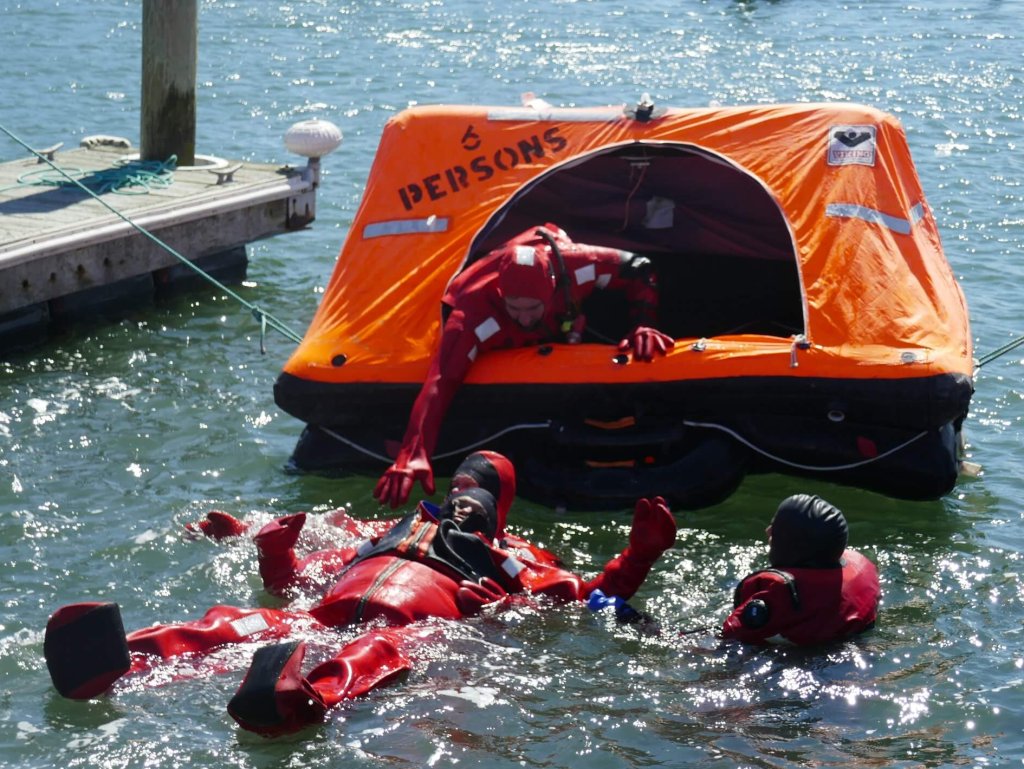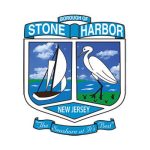TWO MILE LANDING – About 65 fishermen took part in a free, two-day training program that might help save their lives or the lives of their crew members.
Fishing Partnership, a nonprofit based in New Bedford, Massachusetts, runs the safety workshops because commercial fishing has a fatality rate 40 times higher than the national average for on-the-job deaths. The group’s mission is “to improve the health, safety and economic security of commercial fishermen and their families.”
Representatives from the nonprofit, along with personnel from the Coast Guard and State Police, were at Two Mile Landing on Monday, March 18, and Tuesday, March 19, to train the local fishermen.
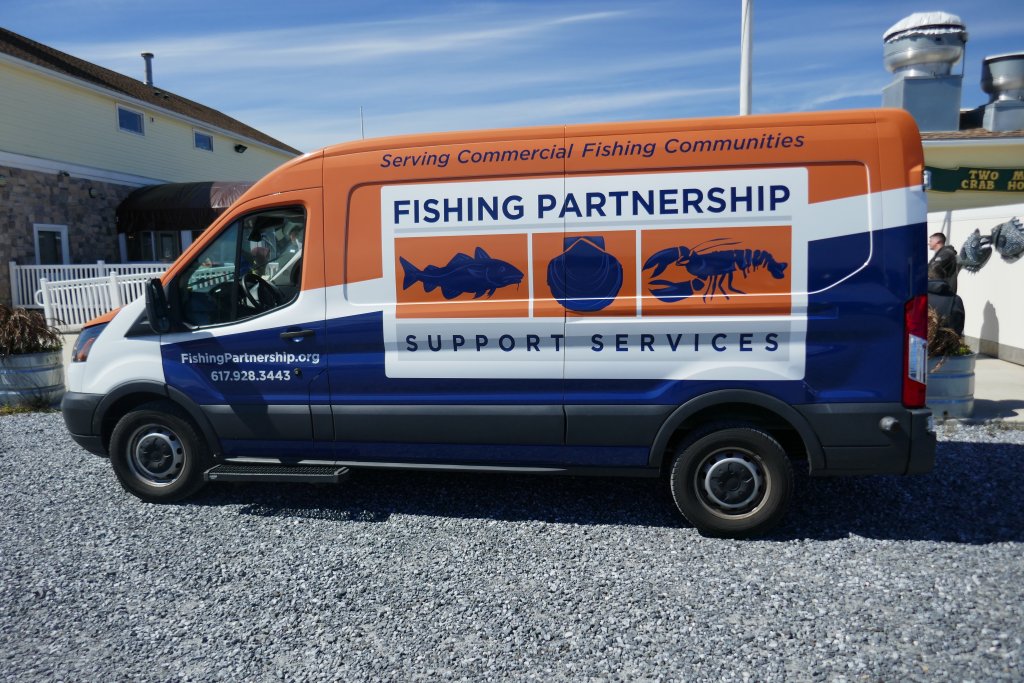
According to arnoldItkin.com, a legal team that handles claims related to commercial fishing accidents, the number one danger faced by fishermen is the vessel colliding with something, including the seabed, and as a result capsizing or sinking. The number two danger is falling overboard, followed by two related dangers, drowning and hypothermia.
In March 2009, the fishing vessel Lady Mary sunk about 66 miles off the coast of Cape May. Only one crew member was rescued – Jose Arias of Wildwood – who was in the water wearing a survival suit. Four other crew members died.
On the first day of the training, the fishermen spent about two hours indoors, taking classes on subjects such as how to handle a man-overboard situation, vessel stability, handling a mayday at sea and Narcan training.
Afterward the fishermen went outside and split into groups to don survival suits, get instruction on flares and emergency position-indicating radio beacons, and practice putting out fires.
The survival suits are also known as quick-donning suits or “Gumby” suits – a reference to a green Claymation children’s TV show character by that name. But the suits, instead of being green like their namesake, are bright orange, so they can be spotted from the air.
The suits range in cost from $525 to $869 and, according to boatingsafetymag.com, are generally not worn until they are needed, if the crew has to abandon ship. The term “quick-donning suit” comes from the fact that they are supposed to be put on over clothes and shoes in less than a minute, not an easy task for some of the fishermen as they stood on a concrete pad.
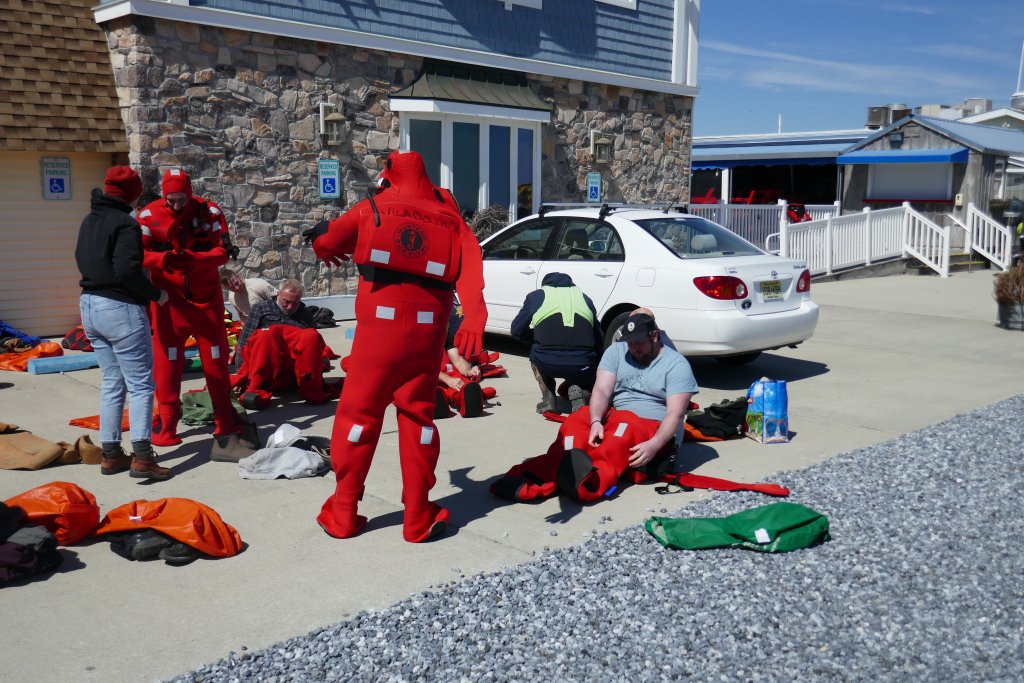
Boatingsafetymag.com says the suits are not designed to be completely airtight but to keep heat in, to fight off hypothermia. The suits will retain some air, which adds to the wearer’s buoyancy, but too much air in the suit can be a problem.
Part of the training included getting air out of the suit before entering the water. One of the fishermen entered the water off a dock behind the Two Mile Crab House and had trouble righting himself because there was too much air in his suit.
The fishermen practiced linking together in the water so crew members did not drift away – which also made them a larger visual target for rescue aircraft or boats – and they took turns boarding a six-man life raft.
As one group worked with the suits, another received training on the proper operation of hand-held flares and parachute flares, the latter of which shoot into the air and drift downward on a parachute. The instructor told the fishermen to be mindful of the slag – hot, melted matter – from the hand-held flares.
“A rubber suit in a rubber boat is not the time to use them,” he said.
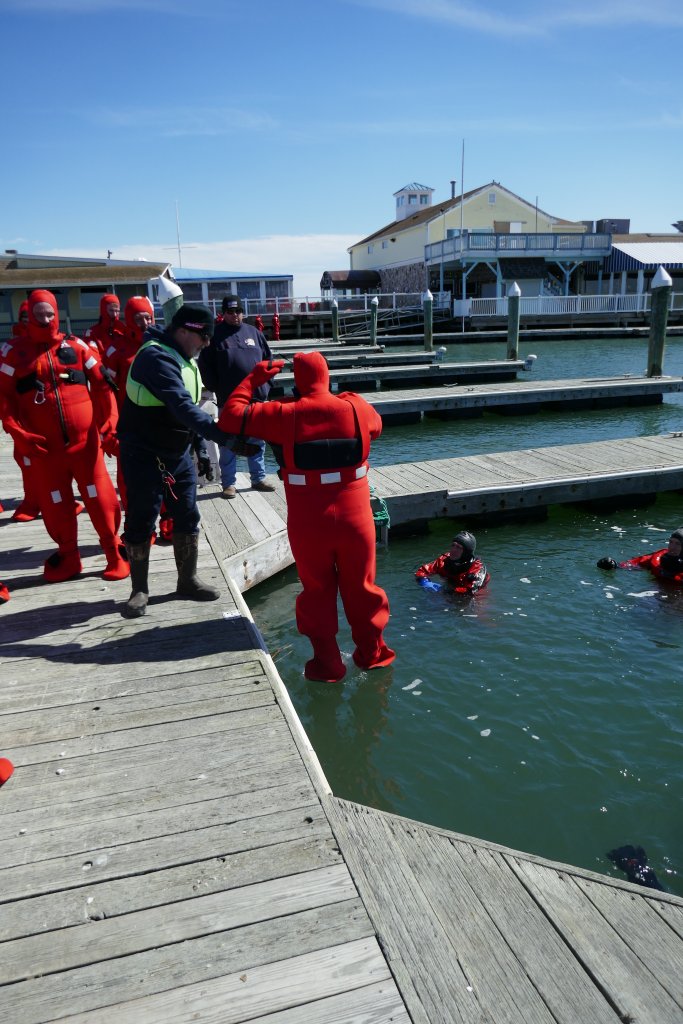
The parachute flare is a projectile, and he urged the fishermen to be mindful of the direction the business end is facing when they set off a flare so as not to hit themselves or others.
The instructors also went over the emergency position-indicating radio beacon, which any commercial fishing vessel should have and which might be the first indication to the Coast Guard that a ship is in distress and where. The devices are normally activated when they go into the water.
In addition, the fishermen practiced using fire extinguishers to put out fires, either as single operators or as a team.
Day two included more instructional training for captains and other crew leaders.
John Roberts, the director of safety and training with Fishing Partnership, said the 65 participants represented about 10 fishing boats from the area and included everyone from new crew members to seasoned captains.

“We’re here now because scallop season opens April 1,” Roberts said.
He said scallop season is not the only reason they are training fishermen, but it happens to be around the corner. The organization runs training sessions between Maine and North Carolina, he said, at which they teach safety and survival, fishing vessel first aid and fishing vessel stability.
Roberts said in cold weather fishing vessels can “ice up,” causing them to have a higher center of gravity and perhaps capsize.
In the case of the Lady Mary, the owner added some modifications over the years that, according to the Coast Guard report on the boat, led to structural instability.
“We just want to make sure they are safe,” Roberts said.
He said his organization encourages fishermen to wear a personal flotation device at all times.
Another part of the training concerned opioid awareness. The group does training on Narcan use and provides Narcan to the participants. Roberts said there have been distress calls at sea regarding an overdose, and a nearby vessel responded and got Narcan to the vessel with the affected party.
Roberts said part of what Fishing Partnership does is provide “navigators,” community health workers who help fishermen and their families with health, housing and virtually anything else they need.
“The navigators are a health connection, not just for fishermen, but for anyone,” he said.
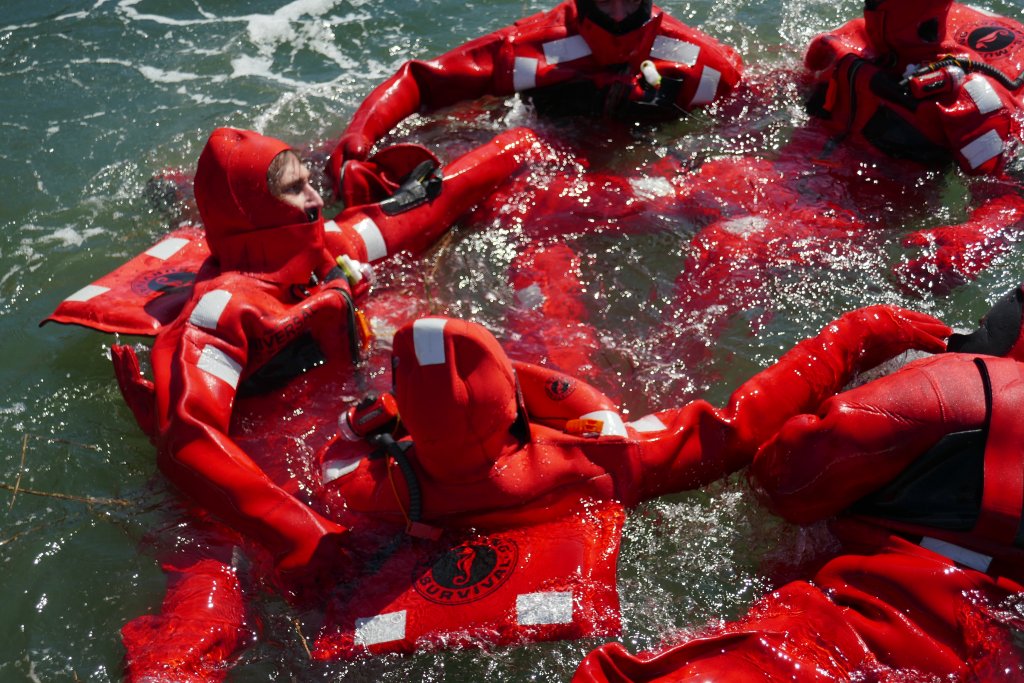
Judi Keding, the lead navigator, was on scene at Two Mile Landing March 18 with two other navigators, both with ties to the fishing industry. She has been married to a fisherman for 26 years. They are all certified by Massachusetts as community health workers, after having received one semester of training.
“It takes a certain type to do this,” Keding said. “If it’s not part of you, you don’t know what they are going through.
“The guys trust us and know we know what we’re talking about.”
Thoughts? Questions? Call Christopher South at 609-886-8600 x-128 or email csouth@cmcherald.com.

